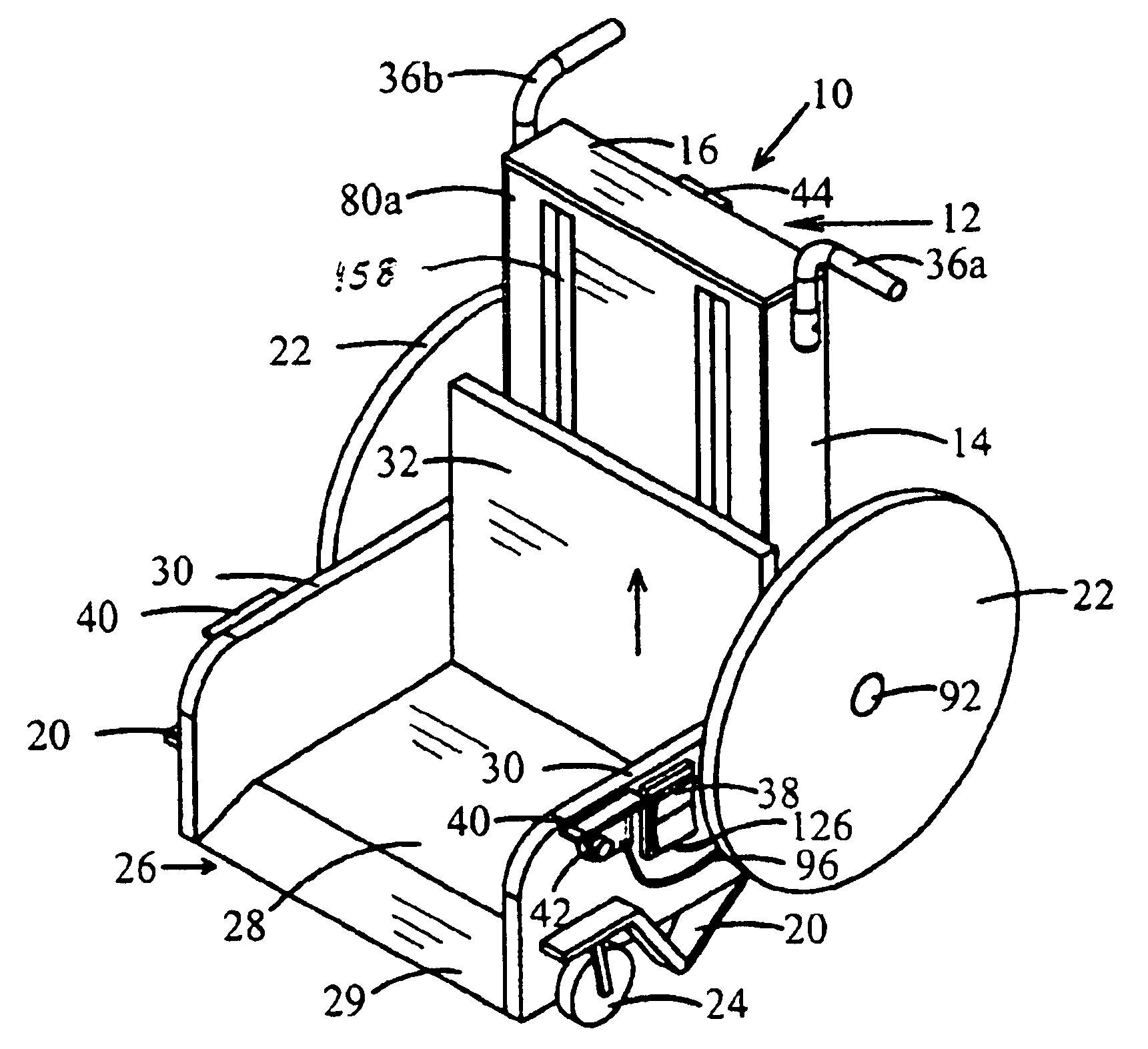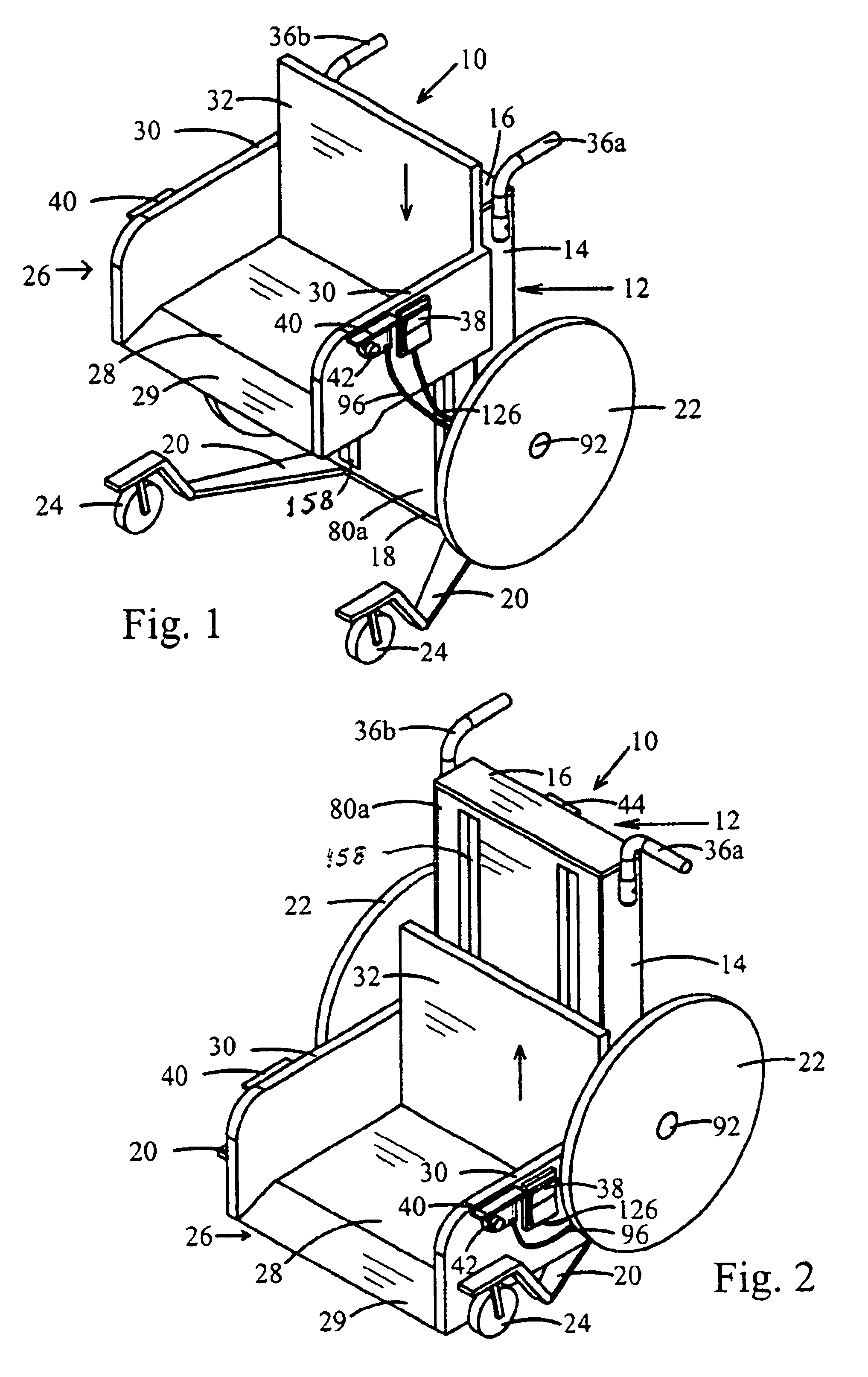Mobile self-recovery lift chair
a lift chair and self-recovery technology, applied in the direction of wheelchairs/patient conveyance, transportation and packaging, vehicle arrangements, etc., can solve the problems of substantial drain on the healthcare system, loss of feeling in the legs, and associated costs, so as to reduce the incidence of injury, and facilitate the loading of a person.
- Summary
- Abstract
- Description
- Claims
- Application Information
AI Technical Summary
Benefits of technology
Problems solved by technology
Method used
Image
Examples
Embodiment Construction
[0039]As shown primarily in FIG. 1 and FIG. 2, the lift chair 10 of the present invention comprises a lift frame 12 with rearward wheels 22 mounted rotatably on lift frame sides, a seat 26, a lift trolley 15, and forward wheels 24 also on chair sides supporting forward extending frame legs 20.
[0040]Lift frame 12 comprises upright opposing closed lift frame sides 14 spaced apart by closed bottom and top horizontal cross members 16 and 18, the frame sides and cross members having lateral extent therein forming a box-like enclosure with front and back openings, the openings covered by opposing front cover and back covers 80a and 80b on the frame sides and cross members, as shown in FIG. 6. Rear covering 80b closes the back of the lift frame 12, shielding motor 44 and lift trolley 15 from fingers and clothing and other objects.
[0041]Legs 20 extend forwardly from lift frame 12, extending horizontally under the seat 26 from the bottom cross member 18 to which it is typically attached and ...
PUM
 Login to View More
Login to View More Abstract
Description
Claims
Application Information
 Login to View More
Login to View More - R&D Engineer
- R&D Manager
- IP Professional
- Industry Leading Data Capabilities
- Powerful AI technology
- Patent DNA Extraction
Browse by: Latest US Patents, China's latest patents, Technical Efficacy Thesaurus, Application Domain, Technology Topic, Popular Technical Reports.
© 2024 PatSnap. All rights reserved.Legal|Privacy policy|Modern Slavery Act Transparency Statement|Sitemap|About US| Contact US: help@patsnap.com










